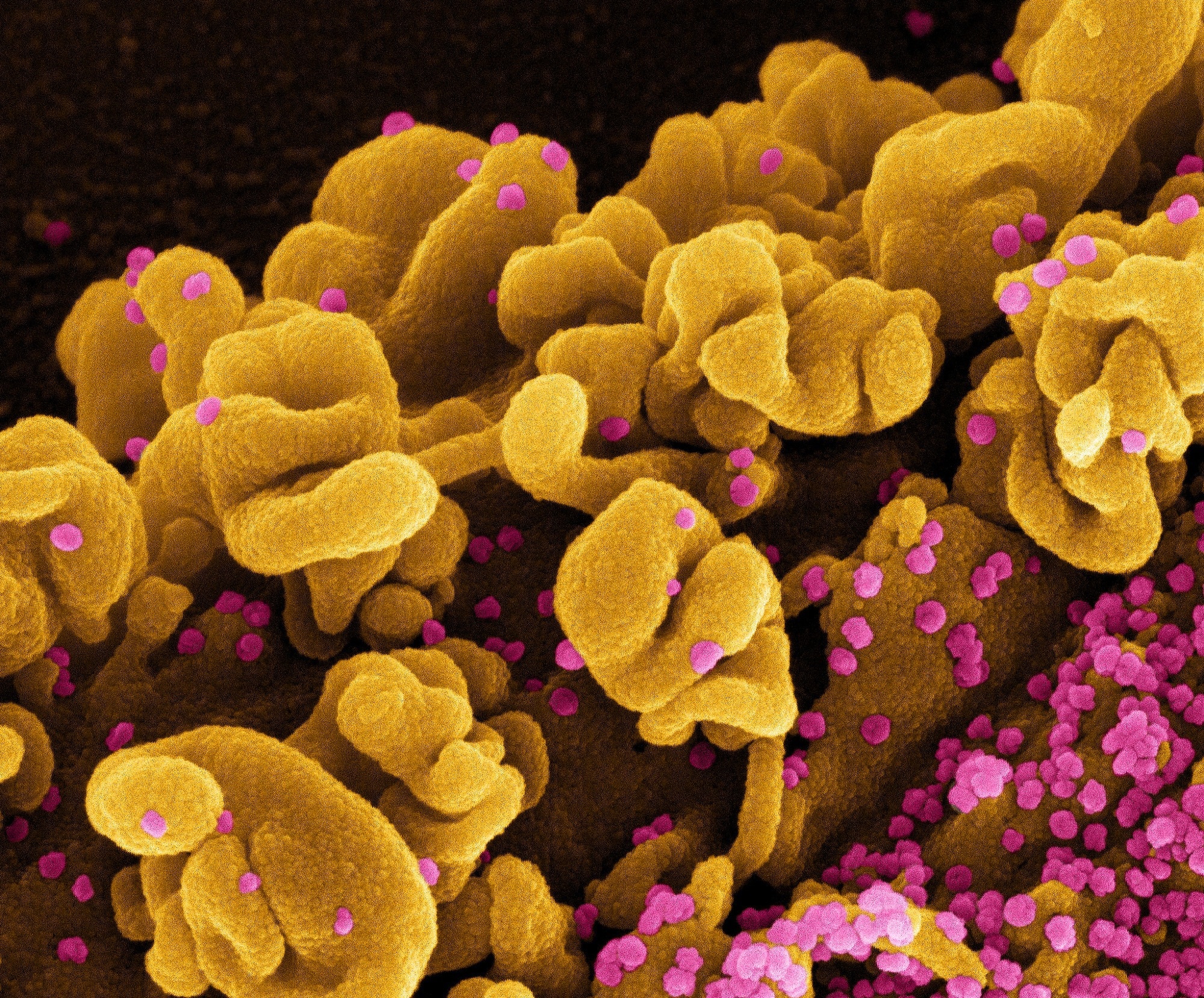In health care, paper-based diagnostics have revolutionized point-of-care approaches by providing disposable, low-cost tools that can be used remotely. Developed by the World Health Organization (WHO), paper-based diagnostics meet the ASSURED (Affordable, Sensitive, Specific, User-Friendly, Rapid and Robust, Equipment-Free, and Deliverable to End Users) criteria. Paper-based diagnostics have the advantage of being affordable, equipment-free, and easily accessible.
 Study: Sensitive detection of SARS-CoV-2 on paper. Image Credit: NIAID
Study: Sensitive detection of SARS-CoV-2 on paper. Image Credit: NIAID
A paper-based diagnostic has been developed by Jinghong Li, Weimin Li, Ruijin Deng, and colleagues from Boston University for the identification of the severe acute respiratory syndrome coronavirus 2 (SARS-CoV-2) with high sensitivity. Developed in just 18 days, the device can detect 400 copies of viral ribonucleic acid (RNA) per microliter and is capable of identifying three coronaviruses (SARS-CoV, Middle-East respiratory syndrome coronavirus (MERS-CoV), and SARS-CoV-2), along with seven influenza subtypes. The assay is inexpensive and does not necessitate skilled technicians for assessment and reporting. The research is published in the journal Nature Biomedical Engineering.
We're committed to providing free access to quality science. By registering and providing insight into
your preferences you're joining a community of over 1m science interested individuals and help us to
provide you with insightful content whilst keeping our service free.
or
Paper-based nucleic acid assay: The Mechanism
The researchers developed an assay called MARVE (Multiplexed, Nucleic Acid-Free, Single Nucleotide-Resolved Viral Evolution) that utilizes a pH indicator that changes color (from red to yellow) as the pH decreases. In their investigation, the authors ingeniously used silver (Ag) ions to interact with two components – a deoxyribonucleic acid (DNA) probe and the enzyme urease.
Ag(I) ions interact with DNA to form C–Ag–C complexes. A free Ag(I) ion inhibits the urease enzyme, which hydrolyzes urea into a weak base – ammonia.
In order to detect the viral RNA, the authors designed the DNA probe to release Ag(I) after it binds to a sequence of SARS-CoV-2. The released Ag(I) suppresses urease activity, resulting in lower pH and a yellow readout. When the probe is not accompanied by the viral RNA, it retains Ag(I), and the active urease degrades urea to produce ammonia––rendering higher pH conditions and emanating a red color.
These reactions can be carried out in solution or on paper substrates resulting in colorimetric test results that can be observed with the naked eye and analyzed with a smartphone.
DNA-toehold: The crucial element
The DNA-toehold exchange probe used in Li and co-authors' assay is essential to its specificity. A DNA-toehold exchange probe consists of two complementary DNA strands that are hybridized together because of their complementary nucleotide sequences. Two exchange reactions are initiated by toeholds, short sequences at the ends of the probe-strand that are complementary to the target sequence or the protector strand.
A DNA-toehold exchange probe binds to the viral RNA target, releasing Ag(I) ions––to impede urease hydrolysis––and establishing the low-pH conditions that result in a change in color – from red to yellow (positive reaction). An invalid viral RNA with a single point mutation is incapable of activating the probe. These prevent Ag(I) release and result in active urease hydrolysis and high-pH conditions that produce a red readout.
Incorporation of assay reactions into origami paper
The reaction steps take place sequentially as the layers of paper are folded onto each other, allowing reaction intermediates to move between layers. A smartphone can be used to evaluate the readout.
Assay Highlights
The MARVE system integrates the specificity of nucleic acid tests with assay times and costs – like those associated with the lateral flow tests. To achieve these features, a single enzyme and a single DNA probe are required, and no nucleic-acid-amplification step is necessary. This aids in saving costs and offers a less complex procedure that takes lesser time.
Since MARVE's reactions happen at room temperature (excepting the thermal-lysis step), there's no need for a heat block. Additionally, MARVE assays are quick to develop since only one probe is needed. The ease of use and accuracy of MARVE indicate that the assays are suitable for home testing.
In fact, MARVE can be modified to eliminate the need for origami-folding steps and can be made more user-friendly, like the lateral-flow assays.